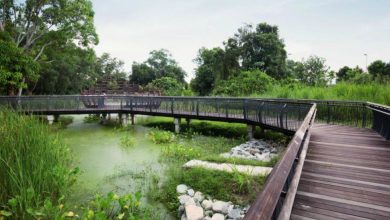The Pyramids Bridge: A Window into the Ancient Egyptian Civilization

The Pyramids Bridge: A Window into the Ancient Egyptian Civilization
Introduction
The ancient Egyptian civilization is a topic that has fascinated historians, archaeologists, and enthusiasts for centuries. From the Great Sphinx to the Valley of the Kings, Egypt is home to numerous architectural wonders. One such marvel that offers an intriguing insight into their advanced engineering skills is the Pyramids Bridge.
What is the Pyramids Bridge?
The Pyramids Bridge, also known as the causeway or the processional way, was a raised pathway that connected the mortuary temple to the pyramid complex. It was primarily used during the funerary rituals, allowing the pharaoh’s spirit to travel from the mortuary temple to the pyramid.
The Purpose of the Pyramids Bridge
The Pyramids Bridge held both practical and symbolic significance. On a practical level, it provided a means for the priests and mourners to access the pyramid without having to traverse the potentially hazardous terrain. Additionally, it served as a processional route during important religious ceremonies.
Symbolically, the bridge represented the connection between the earthly realm and the divine realm. It was believed to be a pathway for the deceased pharaoh’s soul to ascend to the heavens and join the gods.
Engineering Marvels of the Pyramids Bridge
The construction of the Pyramids Bridge showcases the remarkable engineering skills of the ancient Egyptians. The structure was built using limestone blocks, carefully aligned and fitted together. The precision of the construction allowed the bridge to withstand the test of time.
Architectural Features
The Pyramids Bridge typically featured ramps, stairs, and walls adorned with intricate reliefs and carvings. The walls were often decorated with hieroglyphic inscriptions depicting scenes from religious rituals and offerings to the pharaoh.
Lighting and Illumination
One interesting feature of the Pyramids Bridge was its strategic use of natural light. The builders incorporated openings, known as “cleared courses,” in the walls to allow sunlight to penetrate and illuminate the pathway. This not only provided practical lighting but also added to the dramatic effect during religious processions.
Frequently Asked Questions
1. How long is the Pyramids Bridge?
The length of the Pyramids Bridge varied depending on the size of the pyramid complex. While some causeways were relatively short, others stretched over lengthy distances, such as the one associated with the Great Pyramid of Giza, which measures approximately 815 meters.
2. How long did it take to build the Pyramids Bridge?
The exact construction time of the Pyramids Bridge is uncertain. However, it is believed that it was built concurrently with the construction of the associated pyramid and mortuary temple, which typically took several years to complete.
3. Can visitors see the Pyramids Bridge today?
Yes, visitors can witness the remnants of the Pyramids Bridge in various pyramid complexes in Egypt. Though mostly in ruins, these structures provide a glimpse into the grandeur of the ancient Egyptian civilization. Notable examples include the causeways at the Giza Plateau and the temple of Queen Hatshepsut in Luxor.
Conclusion
The Pyramids Bridge serves as a fascinating testament to the advanced engineering skills and religious beliefs of the ancient Egyptians. Its purposeful design and symbolic significance offer valuable insights into the mortuary rituals and architectural achievements of one of the greatest civilizations in history. Exploring these remnants allows us to connect with the past and unravel the mysteries surrounding the ancient Egyptian civilization.



